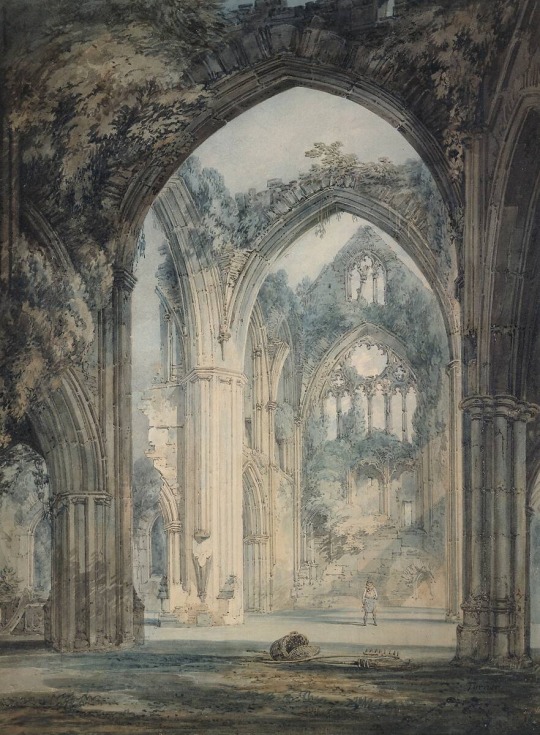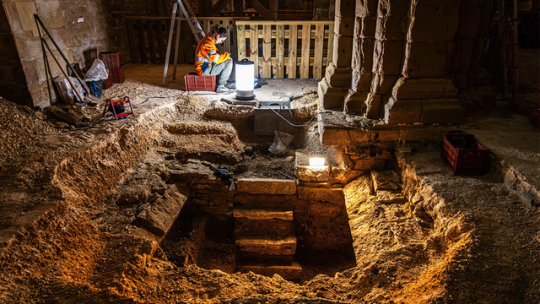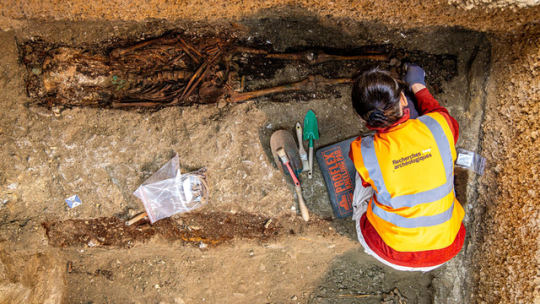#transept
Explore tagged Tumblr posts
Text

Transept of Tintern Abbey, Monmouthshire by Joseph Mallord William Turner
#joseph mallord william turner#jmw turner#art#tintern abbey#ruins#architecture#transept#monmouthshire#wales#england#britain#ruin#nature#history#j.m.w. turner#romantic#romanticism
13K notes
·
View notes
Text

Querschiff, Stephansdom, Wien, 2024.
#architecture#gothic#transept#cathedral#wien#österreich#2024#photographers on tumblr#black and white
30 notes
·
View notes
Text

Today's Flickr photo with the most hits: the south transept of St John Lateran, Rome.
0 notes
Text

0 notes
Text
Seventeen Cool Facts About The Number 17 - Facts.net
17
The French word for 17 is “dix-sept”, which means “ten-seven”.
Like many other languages, French has its own unique system for counting and numbering. The word for 17 in French is “dix-sept”, which literally means “ten-seven”. This unusual phrasing adds a bit of character to the number 17 and makes it stand out from other numbers in the French language.
The 17th letter of the alphabet is “Q”.
The English alphabet consists of 26 letters, and the 17th letter in the sequence is “Q”. This letter is often used in words related to queens, questions, and quizzes. In addition, the letter “Q” is a valuable tile due to its relatively high point value in Scrabble and other word games

0 notes
Text

Gerhard Richter, Cologne Cathedral, South Transept Window, 2007
54 notes
·
View notes
Text
i simply think it would be fun & interesting to write or read a book where you've got some guys having problems in the foreground (as is typical), and some absolutely wild shit occurring in the background. you can tell the background stuff is more important in the long run, but the foreground guys will not STOP having problems (unrelated to the background). so you have to do the reader's equivalent of straining your neck and leaning in weird ways to peer around the foreground guys...
160 notes
·
View notes
Text
I'm too lazy to go back and find my original thread about my cathedral build so here's a new one lol

Soon I'll be getting started on the bulk of the apse. I had to actually map out how I'd draw those lines in MS Paint so I'd know how to make them look as close to correct as I can muster (the white calcite lines show where the arches will go while the purple amethyst blocks represent center points)... and given that those are temporary blocks, I was going away for a week, and this is a server with other people on it, I felt insecure about it

#i got so excited about the apse that i forgot to build all the arches for the transept#so once i do that i get to struggle my way through curved diagonal lines yay#i eyeballed the lines at first but they didn't correctly 'divide' the floor into 5 equal parts#my ms paint diagram of the apse is insane bc it's so complex#i'm following a video but the video... provides more of a formula than a step-by-step guide. which is ideal! but#it makes parts like this really hard because we're just running off vibes at the moment
1 note
·
View note
Text
Le me, reading "The Last King of Poland", a literal, freacking biography:
With all due respect, mister Adam Zamoyski, how dare you?! How freaking dare you?!
I know history, I know it will end with disaster. How dare you make Stanislaus Poniatowski (last king of Polish-Lithuanian Commonwealth) and Catherine the Great (empress of Russia) (both would get these positions some time later btw) like cross between high-school sweethearts and star-crossed (ba dum pss) lovers. We both know it destroyed the country (not only that and the country was in pretty bad shape beforehand too, but still). It caused wars. I have romanticism and patriotic "fight for the fatherland even if you're guaranteed to loose bullshit shoved down my throat to this day because of shit that went down kinda because of them.
And you still make me actually sad when you wrote "When on 14 august 1758 he left Petersburg, he didn't suspect that next time he'll see Catherine will be thirty years later"
You can't make it look like Stanislaus is the first nice thing that happened to Catherine since she arrived to Petersburg. You can't describe them as soulmates, as two (and Stanislaus' second father figure) against the world. You can't say that he was reluctant to... do the thing with her, even speak with her because she seemed cold and later because she was wife of the future, kinda aggressive emperor and sleeping with her was easy way ticket to Siberia and Siberia is what Australia was to British Empire but really freaking cold. You can't then quote how after first time they spent night together Stanislaus wrote "In that moment I forgot that Siberia exist in this world"
You can't write about how distraught they were when they were apart for few months. You can write how they tried to tip toe around because politics. You can't add tension when they were found out and then have her husband (Paul, I think, I don't care about him enough to check) do one nice thing when Stanislaus confessed and Paul just... woke her up in the middle of the night, put her in front of Stanislaus and went "Well, I hope everyone is happy now"
You can't do all of that and expect me to not get invested. And I wasn't even that huge shipper of historical figures before, like c'mon.
And then they turn toxic.
How could you...
#history ramblings#it's kinda funny becasue this book originaly is in English#and I'm reading it translated to Polish because I need it to pas exam in Polish education system#so I need to know all of the terms and names in Polish#so every quote in this post is me translating it to English from Polish translation from English that was translated from original language#this is not counting a possibility that original language in which quote was said being different than the one in which it was written dow#transeption if you will#unless it's something it's about trans people#let me know I will and probably can find a way to butcher English to come up with knew term just for that#polish lithuanian commonwelth#yes I like history#how did you know#next post I'll ramble about the diferences between modern and old polish two PLN coins and that's the threat
4 notes
·
View notes
Text
Reading about medieval architecture so I can make the sparkledog oc equivalent of a convent
#if I was an abbess I would be so territorial about my spires and other such building projects#original transept Do Not Steal
4 notes
·
View notes
Text
#this is to test linguistics not actual height#polls#architecture#architecture mfs do not come for me i know the words ‘narthex’ and ‘transepts’
3 notes
·
View notes
Text
got a little too into an escapist daydream scenario and started imagining the abandoned gothic hall it would take place in and now i can't sleep because i'm too into the speculative architecture of this neo gothic revival world i've created.
#ophelia speaks#it's weird because there's some aspects that MUST adhere to gothic styles or it would drive me crazy#like the roofing situation??#but also i'm gonna put a balcony that runs along the nave and it's gonna cross the transept with a fuckin bridge#we've also gotten pretty far away from what i actually pictured in said daydream scenario by now
1 note
·
View note
Text
i was warned of all this. didn't listen, didn't listen.
please wake up. i need to talk to you right now
#sky says stuff#lyricposting#in the transept; in the apse#in a selfish moment's lapse#i fell asleep waiting for that far off song#ventposting
0 notes
Text

Today's Flickr photo with the most hits: the gable of the north transept at the Votive Church, Vienna.
The Votivkirche is a neo-Gothic style church located on the Ringstraße in Vienna, Austria. Following the attempted assassination of Emperor Franz Joseph in 1853, the Emperor's brother Archduke Ferdinand Maximilian inaugurated a campaign to create a church to thank God for saving the Emperor's life. It was dedicated in 1879.
0 notes
Text

In the transept, in the apse In a selfish moment's lapse I fell asleep waiting for that far-off song
195 notes
·
View notes
Text

Hidden Staircase in Church Leads to 400-Year-Old Burial Vault
Rare coins, rosary beads, human remains found inside coffins from hundreds of years ago.
Archaeologists have unveiled a 400-year-old burial vault after following a long-lost staircase.
The staircase was found in the Church of Saint Philibert in Dijon, France.
The Romanesque church dates back to the second half of the 12th century, according to the French National Institute for Preventative Archaeological Research (Inrap).



"In the transept, a vault, probably from the 15th-16th centuries, has been identified. In it, the deceased, children and adults, are buried in coffins, the bones of each individual being pushed to the sides to make room for the last deceased," said an Inrap press release.
The deceased consisted of mostly adults dressed in shrouds placed in wooden coffins.
"Very few objects were found in the tombs apart from rare coins and two rosaries," added the press release.
Archaeology crews with Inrap found that the foundation of the vault measures about 9 feet in depth, and slab tombs that were discovered date from the 11th through 13th centuries.
Six sarcophagi were also unearthed.
St. Philibert is the only Romanesque from the 12th century church left in Dijon, according to The Institutional Repository for the University of Notre Dame (CurateND).
"During the Revolution, the church was abandoned in 1795. It was given to the city which razed the two chapels and apse of the church to expand the present Rue des Vieilles-Ovens in 1825," according to research posted on CurateND.
St. Philibert is open to the public on select dates for Heritage Days.
By Ashley J. DiMella.




#Hidden Staircase in Church Leads to 400-Year-Old Burial Vault#Church of Saint Philibert#sarcophagi#ancient tombs#ancient graves#ancient artifacts#archaeology#archeolgst#history#history news#ancient history#ancient culture#ancient civilizations#mideval
195 notes
·
View notes